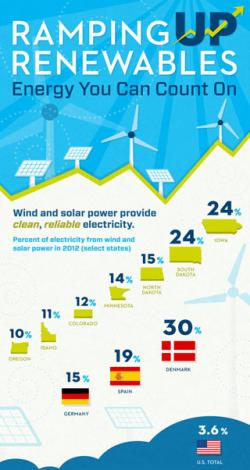
Appropriate government incentives can be an important tool to speed deployment and reduce costs for clean energy technologies. In recent years there has been modest federal support for renewables like wind and solar power, but it pales in comparison to the large government subsidies that continue to prop up coal, natural gas, and nuclear power.
We need a fair and stable federal tax policy for renewable energy that will attract new investments and maintain the strong growth that renewables have experienced in recent years.
The Production Tax Credit (PTC)—a federal incentive that provides crucial financial support for the first ten years of a renewable energy facility's operation—offers a striking example of the benefits, and challenges, of establishing smart government policies for renewable energy.
Learn more:









